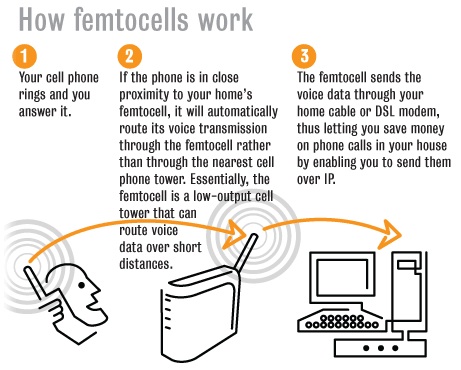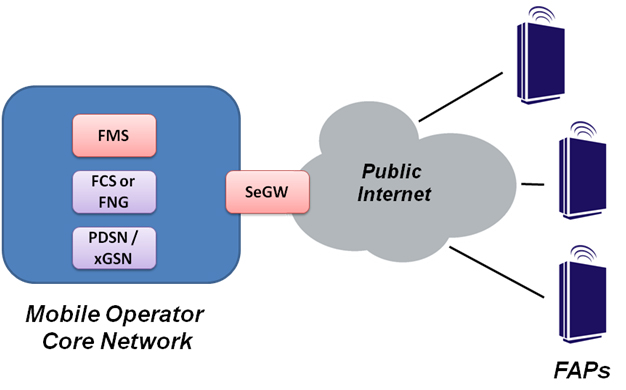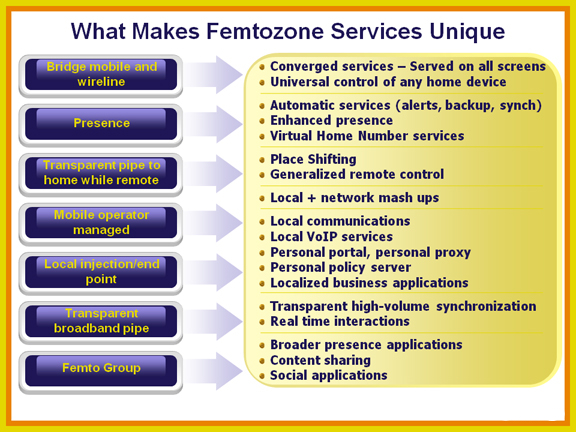Femtocells: Why Now?
A number of factors are coming together to enable femtocell based solutions:
- The high adoption of broadband connections allows the service providers to leverage the IP backhaul to reduce the backhaul costs for additional usage.
- Advances in embedded technologies make it possible to offer a home base station at an acceptable price point approaching $100 over time
- Users are now accustomed to the idea of having a home gateway – thanks to prevalent products like TiVo, Vonage, Slingbox, Wi-Fi AP, as well as DSL/cable modems.
- As 3G adoption increases, indoor coverage becomes a challenge even in otherwise good 2G coverage regions such as Europe and Asia.
- Operators who have trialed cell-site based home zone type services have seen the potential to leverage home zones for improved customer retention.
- New low power GSM spectrum has enabled new players to participate in mobile offerings based on licensed band femtocells. Source
Working Principle
Femtocell Network Architecture
There are three network elements that are common to any femtocell network architecture. These are:
- Femtocell Access Point (FAP)
- Security Gateway (SeGW)
- Femtocell Device Management System (FMS)
Two other elements that are in all femtocell network architectures are entities that enable connectivity to the mobile operator core. Depending on the specific architecture used for circuit switched calls, there can be either a Femtocell Convergence Server (FCS) or a Femtocell Network Gateway (FNG). For packet calls, depending on the airlink technology, there can be either a PDSN or xGSN (GGSN/SGSN) in the core. In most cases, the PDSN / xGSN are the same as those used for macro networks. Source
Features
Femtocells can enable new services because they have seven unique traits that set them apart from all the other devices in the home in terms of service delivery. They are:
- Mobile/Home Network Bridging.
- Presence.
- Universal Anchor to Home Network.
- Managed Service Delivery Platform.
- Local Traffic Injection Point.
- Transparent Mobile Broadband.
- Social Networking Tool.
When taken individually, each of the seven unique traits can potentially be achieved by other devices in the home. When thinking about each of these aspects in more detail, however, it becomes apparent that the femtocell can provide this functionality in a much more straightforward and natural manner than any other device in the home.
| |



